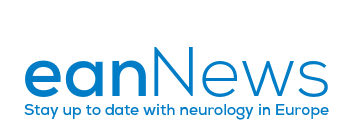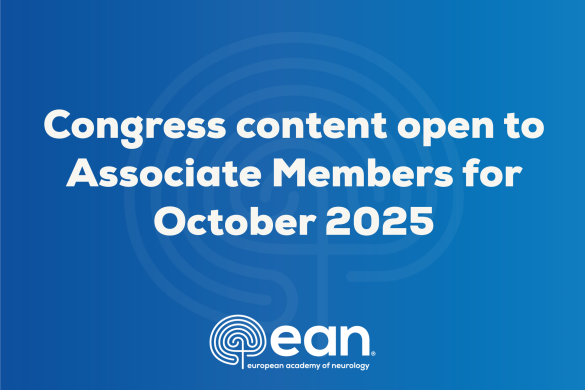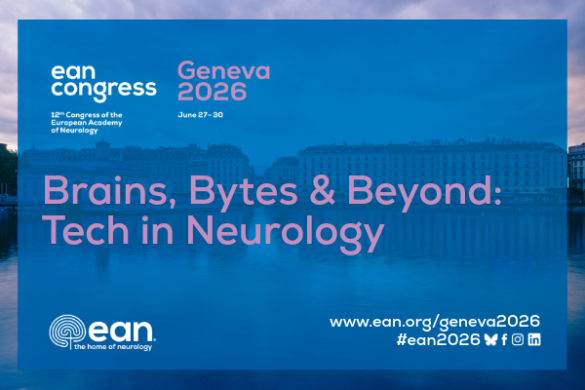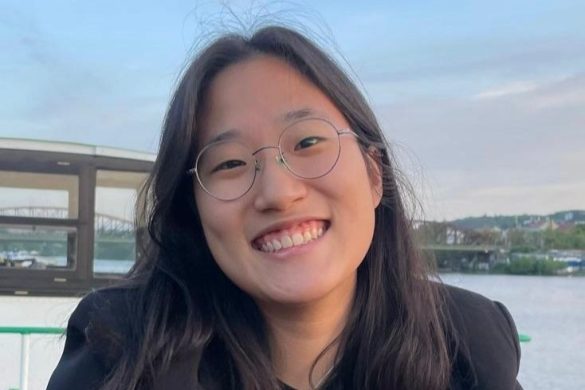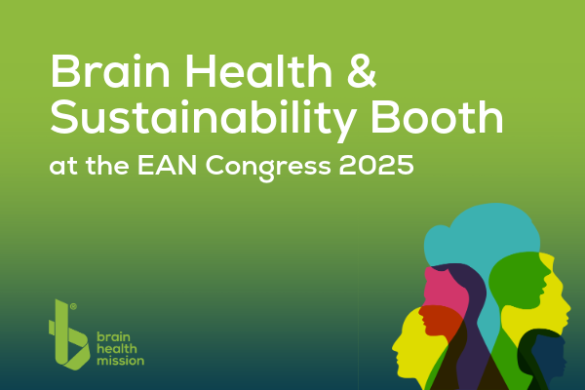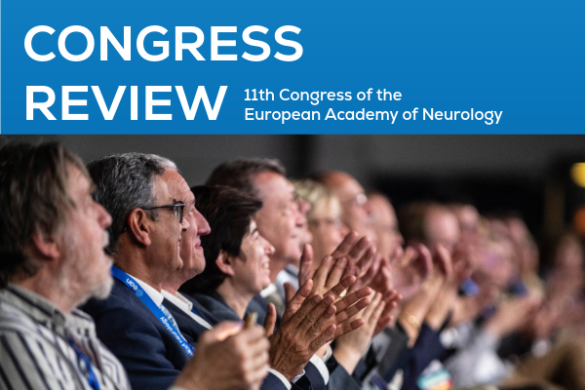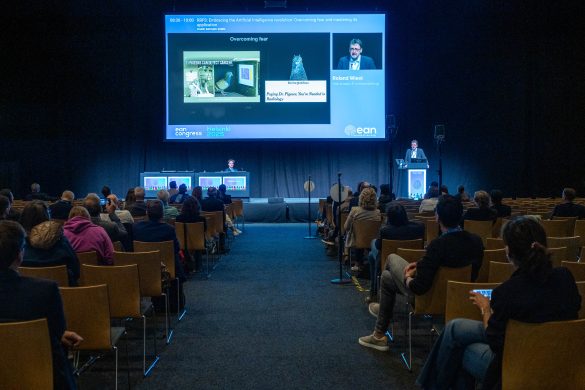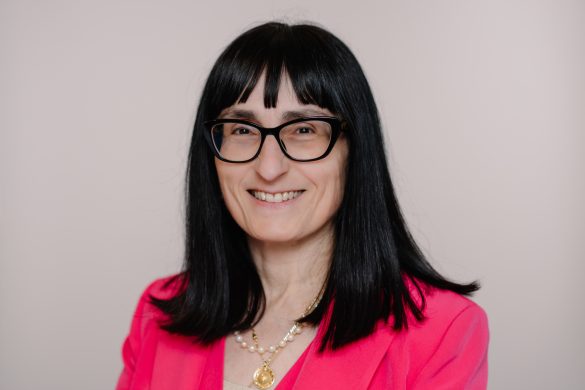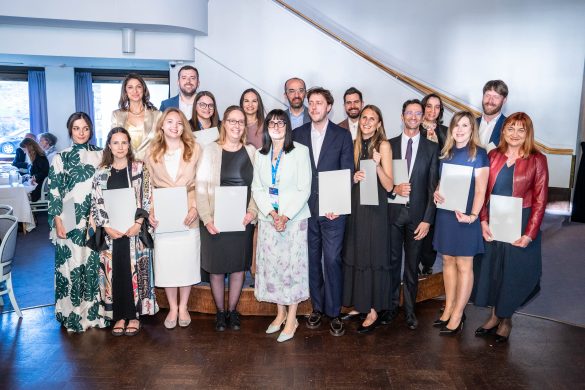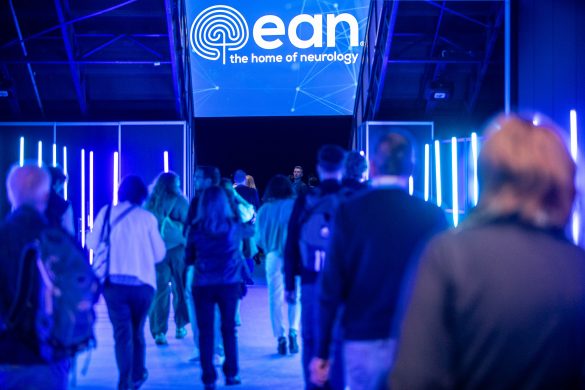by Anne Bruijnes
On the third day of the congress, a full room of delegates settled in for the symposium New Therapeutic Roads for Neuromuscular Diseases, expertly steered by session chairs Benedikt Schoser and Kristl Claeys. The brief was ambitious—cover every major therapeutic platform now reshaping care—and the faculty delivered: four lectures, each tackling a different pillar of innovation, knitted into a single narrative about where neuromuscular medicine is heading and what it will cost, clinically and economically, to get there.

Kristl Claeys opened with CAR T-cell Therapy in Myasthenia Gravis and Beyond, showing how an oncology mainstay is being repurposed for autoimmune neuromuscular disease. She walked the audience through the manufacturing pipeline—from leukapheresis and genetic modification to expansion and reinfusion—and explained how the engineered cells selectively eliminate autoreactive B-cells in myasthenia gravis (MG). Early, small-scale trials already show meaningful symptom relief in refractory MG. Importantly, Claeys noted that side effects tend to be milder in autoimmune settings than in cancer, though long-term safety data are still sparse. CAR T-cells could yet become a one-off cure for severe MG—provided toxicity and production costs can be contained.
Next, Benedikt Schoser addressed Gene Therapy in Neuromuscular Disorders—Caveats of Antisense Oligotherapeutics. Using myotonic dystrophy type 1 (DM1) as a model, he presented phase 1/2 data showing modest but clinically relevant gains—better grip strength, reduced myotonia—after intravenous delivery of splice-correcting antisense oligonucleotides (ASOs).
The outlook is encouraging: the first phase III trials are now under way, a landmark for a disease long deemed untreatable. Still, Schoser warned of unresolved issues. Durability remains uncertain; repeated infusions could become logistically burdensome, and treatment-related antibodies may blunt long-term efficacy. He closed with a call for broad collaboration among researchers, clinicians, and industry to optimise delivery, monitor safety, and accelerate progress.
In a lecture titled Advances in Viral Vector-Mediated Gene Therapy, Francesca Fumagalli compared the three main delivery systems—adenoviral, adeno-associated viral (AAV), and retroviral vectors—outlining when and why each is chosen. Citing spinal muscular atrophy (SMA), she illustrated how in vivo AAV therapy has revolutionised care, then briefly touched on ex vivo approaches in which cells are corrected outside the body before reinfusion. Her core message: vector and route must align with the disease’s biology, and robust long-term and real-world data—anchored by genotype-phenotype correlation and natural-history studies—are essential for future trial design.
Closing the scientific tour, Nadine van der Beek revisited a therapeutic workhorse in Enzyme Replacement Therapies in Neuromuscular Disorders. The first recombinant enzyme for Pompe disease reached clinics in 2006, yielding an unrivalled trove of follow-up data. Longitudinal graphs revealed a shifting phenotype: patients live longer but show evolving distal weakness and growing central-nervous-system involvement—trends invisible without two decades of surveillance. These insights have spurred next-generation enzymes with better tissue penetration and lower immunogenicity. Van der Beek argued that with richer real-world evidence, one-size-fits-all dosing should give way to tailored regimens that reflect individual trajectories.
Together, the four lectures sketched a therapeutic ecosystem in flux. CAR T-cells promise an immunological reset; ASOs fine-tune RNA; viral vectors swap faulty genes; enzymes buy time while cures mature. Each modality presents a distinct blend of efficacy, risk, cost, and logistical complexity—but all are pushing neuromuscular care beyond symptomatic treatment and toward disease modification.
What clearly emerged across the talks were three shared imperatives for the future:
- Long-term follow-up and real-world registries to assess durability and uncover late-emerging effects.
- Natural-history and genotype-phenotype studies to refine trial design and outcome measures.
- Equitable access strategies to ensure that innovation benefits all patients, not just a privileged few.
This session made one thing clear: the landscape of neuromuscular therapeutics is rapidly expanding—not along a single path, but through multiple, converging roads. Whether through immune modulation, gene repair, or enzyme supplementation, the next decade will demand both scientific ingenuity and strategic coordination to translate potential into lasting progress.
